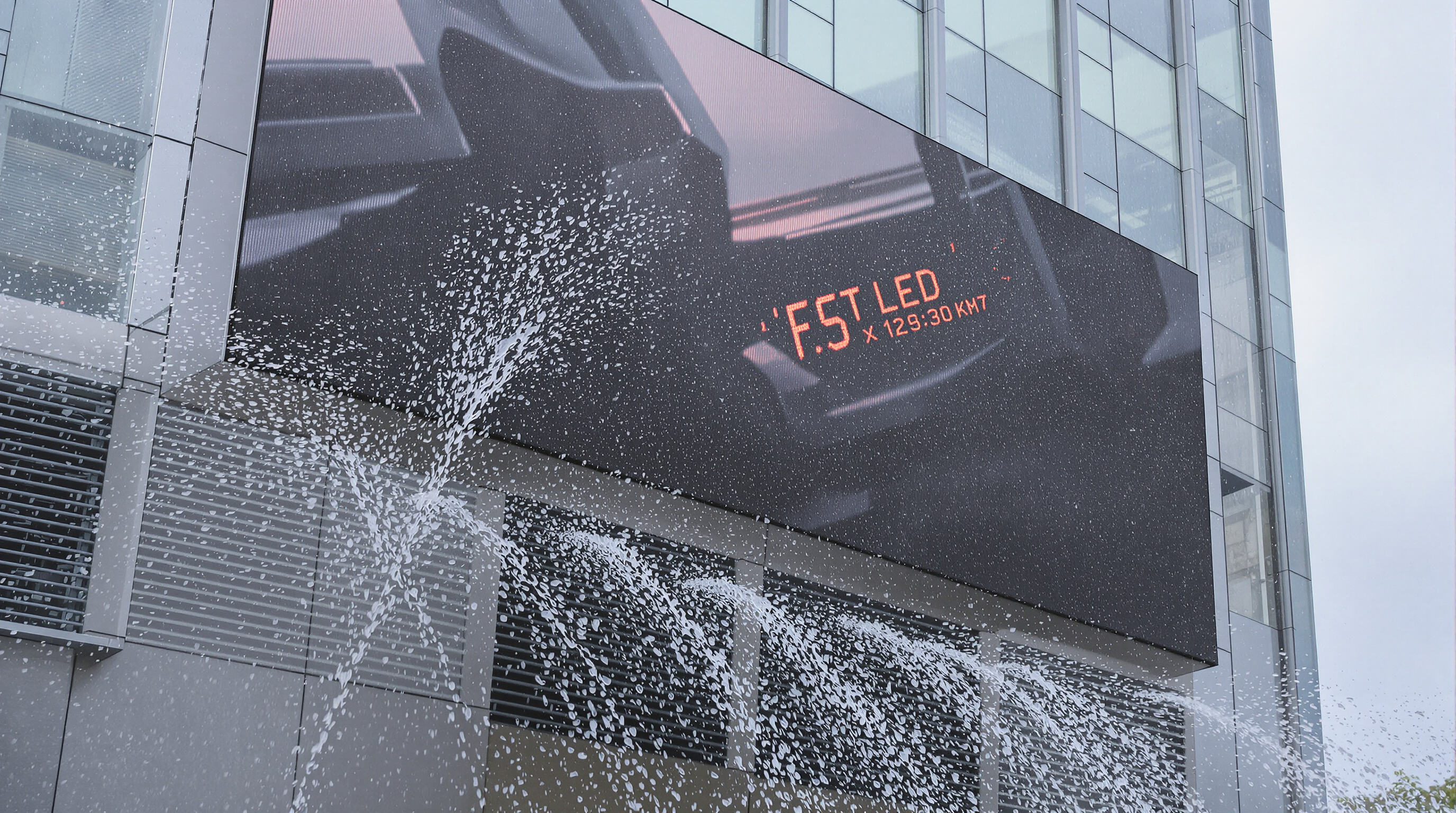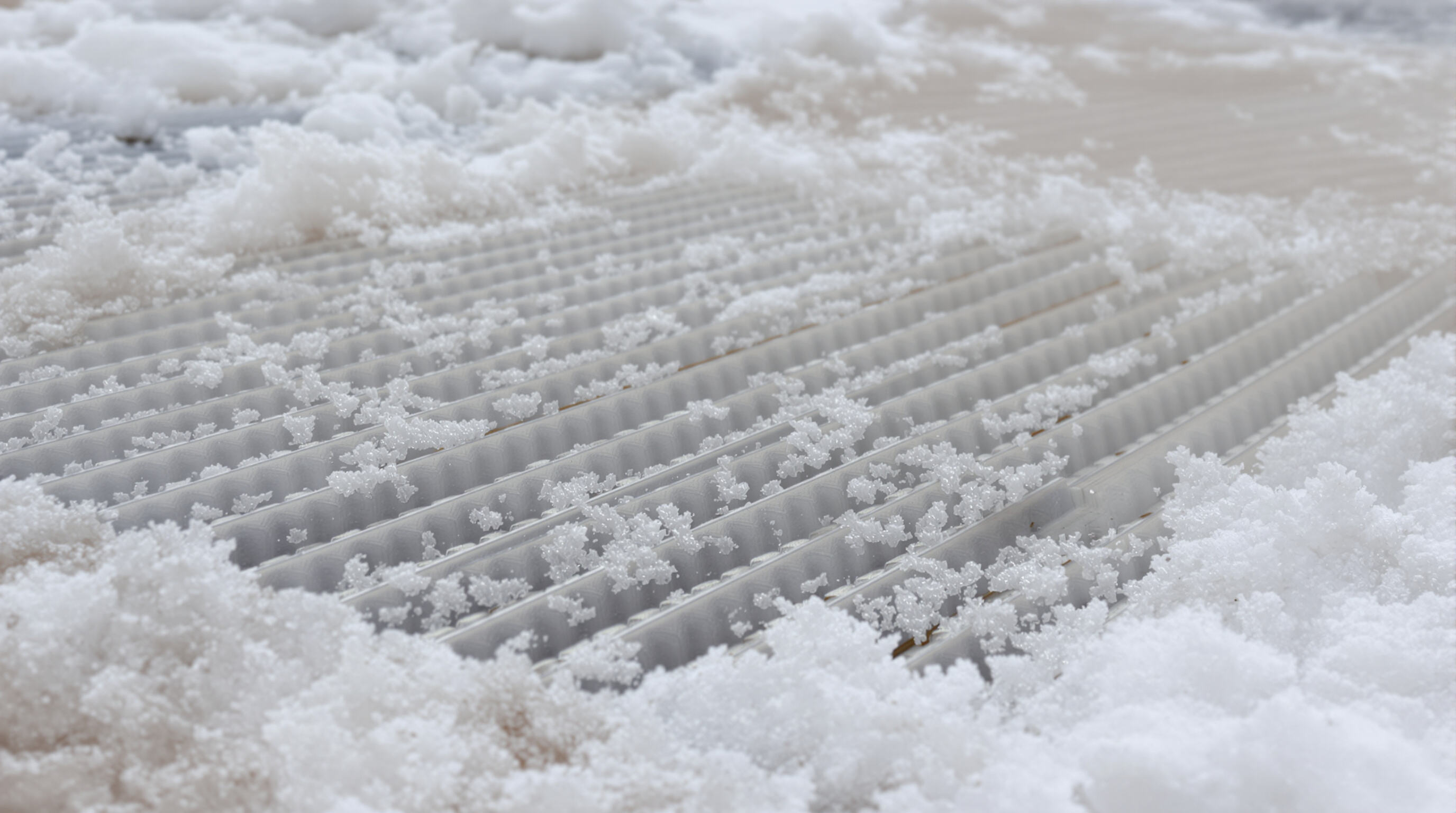Weatherproof Enclosure Design and IP Rating Standards About Outdoor Fixed LED Displays

Understanding IP65 and Higher Protection Standards for Outdoor Fixed LED Displays
The IP65 (Ingress Protection) standard serves as the minimum requirement for outdoor LED displays that need to stand up to weather conditions. These displays are fully protected against dust ingress and can handle low pressure water sprays coming from all directions. According to the IEC 60529 test specifications, panels must endure about 12.5 liters of water per minute when positioned three meters away. For tougher conditions, there are higher ratings available. IP66 offers better protection against strong water jets around 100 liters per minute, which makes sense for areas with heavy rainfalls. Then we have IP68, which actually protects equipment even if it gets temporarily submerged, so this one works well in places prone to flooding or where humidity levels stay consistently high.
Sealing Methods and Gasket Integration for Full Waterproofing
Good waterproofing depends heavily on those multi layer gasket systems crafted from marine grade silicone. These gaskets act as barriers protecting important parts like power supplies and those little driver IC chips from getting damp. The compression molded ones featuring those 360 degree tongue and groove designs really work well to keep the seal tight even when temperatures swing wildly between minus 40 degrees Celsius all the way up to 80 degrees. Real world testing indicates that these seals stop about 99 point seven percent of humidity from getting through, which is pretty impressive considering how humid it gets in tropical areas where the air often holds around ninety five percent moisture content.
Real-World Performance: Resistance to Water, Dust, and Humidity in Harsh Conditions
Coastal installations show remarkable results where IP66 rated displays have less than 0.01% pixel failures after sitting through salt spray for 18 months straight. That's way better than the 7.2% we see with IP54 models in similar conditions. When it comes to deserts, those triple sealed air vents do a great job keeping out dust particles measuring up to around 15,000 micrograms per cubic meter during sandstorms while still letting enough air flow through to keep systems cool. Thermal imaging tests also reveal something interesting: internal humidity stays under 60% despite wild temperature swings from scorching 50 degree Celsius days down to freezing minus 20 at night. This kind of performance means these devices can handle pretty much any climate thrown their way without missing a beat.
Robust Material Construction for Long-Term Environmental Resistance
Outdoor fixed LED displays require materials engineered to endure decades of exposure. Coastal and urban settings demand durable alloys such as marine-grade aluminum, which maintains 92% corrosion resistance after 10 years in salt spray tests (Zhang et al., 2019). These materials resist oxidation while preserving thermal conductivity essential for consistent display performance.
Corrosion Prevention in Coastal and Polluted Urban Environments
Stainless steel frameworks treated with electrochemical passivation reduce rust formation by 78% compared to standard carbon steel in accelerated aging tests. Chemically neutralized polymer coatings protect against sulfur dioxide and nitrogen oxides in polluted urban areas, extending maintenance intervals by 300% based on manufacturing trials.
UV-Resistant and Anti-Aging Materials for Sustained Color Accuracy
Optical-grade silicone encapsulation limits LED color deviation to less than 5% ΔE after 50,000 hours of UV exposure. UV-stabilized polycarbonate diffusers retain 98% light transmission efficiency over an estimated 15-year lifespan under continuous solar radiation, as verified by black panel testing.
Ensuring Structural Stability and Longevity Under Continuous Exposure
Reinforced magnesium-aluminum composite backplates withstand wind loads up to 150 mph without permanent deformation, validated through hurricane simulations. Engineering analyses show modular designs using corrosion-resistant fasteners extend service life by 40% in coastal installations compared to welded alternatives (Construction Marketing Association, 2023).
Advanced Thermal Management for Reliable Operation in Extreme Temperatures

Outdoor fixed LED displays rely on precision thermal engineering to operate reliably from -40°C to 50°C. Three core design strategies ensure consistent performance across extreme environments.
Operating Ranges from -40°C to 50°C: How Design Preserves LED Efficiency
Thermally stable driver ICs and phosphor-converted LEDs maintain color consistency despite wide temperature swings. Conductive copper alloy substrates dissipate heat 23% faster than conventional materials, while phase change materials absorb thermal stress at critical junctions during sudden environmental shifts.
Passive Cooling and Aluminum Housings for Effective Heat Dissipation
Extruded aluminum enclosures with integrated fins achieve thermal conductivity of 180 W/m·K, enabling efficient passive heat dissipation without fans. This approach cuts power consumption by 18% compared to active cooling systems and eliminates risks of moisture ingress—particularly beneficial in humid coastal and arid desert installations.
Field Performance Data: Arctic Cold vs. Desert Heat Installations
Deployments in the Sahara Desert show less than 5% brightness variation at 48°C ambient temperatures, while units in Alaska demonstrate reliable cold-start functionality at -38°C. Advanced thermal interfaces preserve 94% luminous efficacy after 15,000 hours in tropical conditions with 90% humidity, confirming robust all-climate performance.
Structural Integrity Against Wind, Vibration, and Seismic Stress
Reinforced Frameworks for Stable Outdoor Fixed LED Display Installation
Aircraft-grade aluminum frameworks equipped with seismic bracing support lateral forces equivalent to a magnitude 7.0 earthquake. Cross-bolted joints and powder-coated steel substructures prevent metal fatigue, while modular panel configurations evenly distribute mechanical stress across the display surface.
High Wind Load Resistance and Aerodynamic Design Considerations
Engineered cabinet porosity and optimized rear venting reduce wind pressure by 18–22% without compromising thermal management. Wind tunnel testing verifies structural integrity under 150 mph gusts, with perforated back panels functioning as pressure relief mechanisms during extreme weather events.
Vibration Damping and Seismic Resilience in Urban and Industrial Zones
Multi-stage isolation systems—incorporating rubber bushings, spring-loaded mounts, and tuned mass dampers—mitigate vibrations from 5 Hz (heavy vehicle traffic) to 30 Hz (subway operations). A 2024 study on industrial equipment durability found similar damping techniques reduce structural wear by 37% compared to rigid mounting solutions.
Case Study: Surviving Hurricane-Force Winds with IP65 and Reinforced Frames
A digital billboard in Florida featuring triple-layered gaskets and hurricane-rated tie-down anchors remained fully operational during Category 4 winds (130–156 mph). Post-event inspections revealed zero diode failure in the reinforced unit, compared to 83% failure in non-braced control units exposed to identical conditions, demonstrating the effectiveness of integrated sealing and structural reinforcement.
Humidity and Moisture Control in Challenging Climates
Conformal Coating and Internal Barriers for Coastal and Tropical Resilience
Circuit boards coated at the nano scale offer protection against salt spray and moisture floating through the air, which cuts down on component failures by around 82% when deployed along coastlines according to research published in the Electronics Protection Journal last year. When manufacturers combine these coatings with multiple layers inside plus those IP65 rated gaskets, they end up creating compartments that stand up pretty well against humidity getting in, even during those long rainy monsoon periods we see sometimes. Take Singapore for instance, where the climate is really hot and humid all year round. The displays there often feature silicone membranes that stop nearly all water molecules from getting through while still letting out heat, something that makes them last much longer before needing replacement or repair.
Preventing Condensation and Internal Corrosion in High-Humidity Environments
The thermal equilibrium design maintains internal temps around 3 to 5 degrees Celsius warmer than outside conditions, which stops condensation from forming inside equipment. This is really important for areas prone to fog like mountain regions or tropical rainforests where moisture can be a big problem. The system combines desiccant cartridges with smart ventilation that reacts to changes in humidity, keeping the internal air dry at less than 40% relative humidity. That's way below the 60% mark where metal starts corroding according to recent findings published in Materials Durability Report last year. Frames made from aluminum treated with chromate conversion coatings have shown remarkable durability against corrosion even when exposed to extreme humidity swings from as low as 30% to as high as 95% RH on a daily basis.
FAQ Section
What is the significance of IP ratings like IP65 for outdoor LED displays?
IP ratings such as IP65 indicate the level of protection an enclosure offers against dust and water ingress. An IP65 rating signifies complete protection against dust and protection against low-pressure water jets, making it suitable for outdoor LED displays in diverse weather conditions.
Why are silicone gaskets important in weatherproof enclosures?
Silicone gaskets play a crucial role in sealing enclosures, protecting sensitive components from moisture and environmental factors. They help maintain the integrity of the enclosure against humidity and temperature fluctuations, ensuring durability and reliability.
How do robust materials contribute to the longevity of outdoor LED displays?
Robust materials like marine-grade aluminum and stainless steel frameworks offer resistance to corrosion, oxidation, and thermal stress. These materials ensure long-term performance and minimal maintenance, even in harsh environmental conditions.
What are the thermal management strategies for outdoor LED displays?
Thermal management strategies include using thermally stable components, conductive materials for efficient heat dissipation, and passive cooling systems, ensuring reliable operation in extreme temperatures from -40°C to 50°C.
What measures are in place to protect displays from wind and seismic stress?
Reinforced frameworks, seismic bracing, and aerodynamic designs help displays withstand wind loads and seismic stress. These measures ensure structural stability, preventing damage during extreme weather or seismic events.
Table of Contents
- Weatherproof Enclosure Design and IP Rating Standards About Outdoor Fixed LED Displays
- Robust Material Construction for Long-Term Environmental Resistance
- Advanced Thermal Management for Reliable Operation in Extreme Temperatures
- Structural Integrity Against Wind, Vibration, and Seismic Stress
- Humidity and Moisture Control in Challenging Climates
-
FAQ Section
- What is the significance of IP ratings like IP65 for outdoor LED displays?
- Why are silicone gaskets important in weatherproof enclosures?
- How do robust materials contribute to the longevity of outdoor LED displays?
- What are the thermal management strategies for outdoor LED displays?
- What measures are in place to protect displays from wind and seismic stress?




